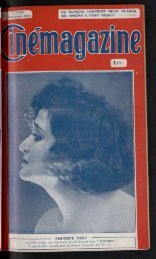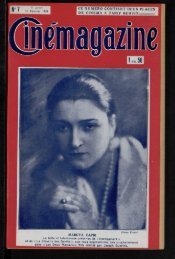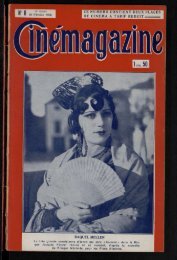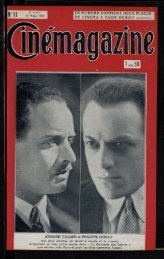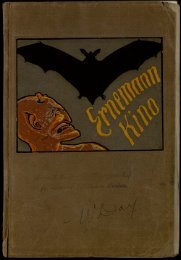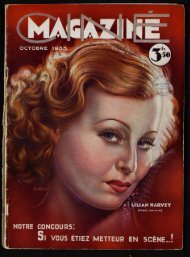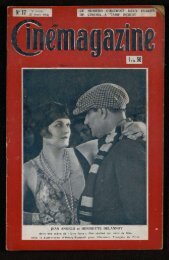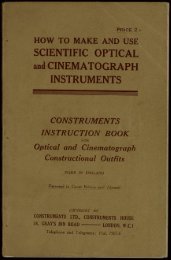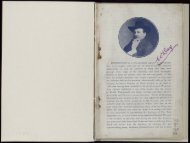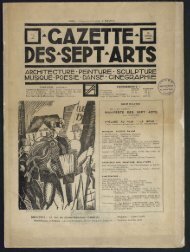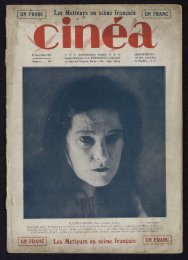Untitled
Untitled
Untitled
Create successful ePaper yourself
Turn your PDF publications into a flip-book with our unique Google optimized e-Paper software.
68<br />
MODERN MAGIC LANTERNS.<br />
They will roll up into a fairly small compass, however, and<br />
give a better result than can be obtained with any sheet ;<br />
moreover, they do not want stretching, but merely to be hung<br />
from their roller with a weighted rod along the bottom. In<br />
large sizes, such screens have a tendency to bend, the edges<br />
Fig. 54.<br />
ARRANGEMENT OF LANTERN, AUDIENCE, AND OPAQUE SCREEN.<br />
stretching more than the centre, which after a time may<br />
render them almost useless.<br />
In spite of its many drawbacks, therefore, the sheet remains<br />
the sheet anchor of the lanternist, possessing, as it<br />
does, portability together with an excellent flat surface and<br />
a fair amount of reflecting power. It should be provided<br />
with rings or eyelets, which must be securely stitched to its<br />
edges every foot apart, by which it is hung and stretched.<br />
THE SCREEN AND GENERAL ARRANGEMENTS. 69<br />
A frame is the most generally useful means of stretching<br />
a small sheet, say one not exceeding 8 feet square, but<br />
above this size the frame, no matter how much it may take<br />
to pieces for packing up and carrying, is a bulky affair, and it<br />
is better to rely upon ropes. The method of stretching the<br />
sheet with ropes is shown in Fig. 55, in which A is the sheet<br />
suspended from its two top corners by the rope B B, which<br />
passes over two pulleys in the ceiling (which must be further<br />
apart than the width of the sheet itself), and thence is<br />
fastened to the floor. Stout string is then tied to the top<br />
corners and laced backwards and forwards through the holes<br />
Fig. 55. METHOD OF LACING UP LANTERN SCREEN.<br />
in the sheet and round the rope until the bottom corners are<br />
reached, from whence the string must pass to the floor as<br />
shown. While it is important to stretch the sheet sufficiently<br />
to make its surface quite flat, more tension than is necessary<br />
to effect this must not be employed, or, no matter how well<br />
the eyelet holes are stitched to the sheet, they will soon<br />
become loosened and tear off, bringing, it is most likely, some<br />
of the sheet with them. The method of lacing described<br />
may also be applied with advantage to the stretching of a<br />
sheet on a frame, allowing, as it does, each side of the sheet<br />
to be fastened with one piece of string and a single knot.



